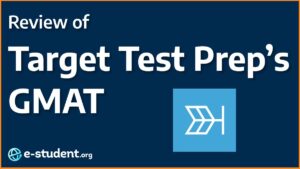In today’s evolution of education, e-learning has become a popular alternative to in-person classes, offering learners the flexibility to study from any corner of the globe. But as we navigate this digital transformation, it is increasingly clear that not all subjects can be translated easily into this kind of learning. Many disciplines demand a physical and practical approach, most notably in the realms of medical science and engineering. And many others, from psychology to law, require significant interaction and direct experience.
The move to digital platforms has been less than ideal for fields where hands-on practice and teacher interaction are not just beneficial but necessary. No digital interface can recreate the physical sensations of a scalpel making its first cut during an autopsy for a medical student, nor can a discussion board simulate the high-stakes atmosphere of a courtroom.
This article dives into the challenges of teaching practical subjects through online learning. Although these pitfalls are present, e-learning could still overcome them in time. Ideally, online education can complement and enhance practical learning in interactive and engaging ways.
Table of Contents
Theory Versus Practical Experience
While theoretical knowledge is the backbone of any education, in certain fields, practical understanding is the lifeblood. In online learning environments, the physical aspect of education is often neglected or made secondary. This can result in a superficial understanding of subjects where real-world application is crucial. A surgeon must be as familiar with the feel of tissue as with the knowledge of anatomy, and an engineer must understand materials not just on the molecular level but also in their hands.
The lack of practical experience in online education can result in a skills gap that might negatively impact learners who go on to seek employment. In today’s competitive job market, concrete skills can help job seekers stand out. Employers want candidates who are not only knowledgeable but can apply that information in real-world settings.
Solution: To bridge this gap, educational institutions can adopt a blended learning approach, integrating E-Learning with regular or intensive in-person workshops. For instance, medical students could complete their theoretical coursework online but come together for concentrated practical sessions in a clinical setting. Similarly, engineering students could use virtual simulations to grasp concepts and then apply them in real-world lab sessions facilitated by their institutions.
Research has thrown light on the positive potential of blended learning. A study focusing on nursing students highlighted that a mixture of online learning and traditional face-to-face instruction not only achieved comparable test results to conventional courses but also significantly improved student satisfaction. This underscores the potential of blended learning to not just match but enhance the educational experience.

Developing Skills Hands-On
Developing skills in certain disciplines requires repeated, detailed physical interaction that E-Learning platforms currently cannot offer. In the medical field, developing muscle memory for surgery or interpreting medical symptoms requires a level of direct, hands-on practice that online simulations cannot satisfy. And this problem is not limited to scientific subjects. Many fields depend on in-person practical learning, from art and design to law and languages.
Many of these subjects might require not only physical work and practice, but some also benefit significantly from the immediate feedback provided by in-person classes. Language classes provide an opportunity to listen to and talk with peers and teachers, and through physical art lessons, teachers can observe and evaluate their learners’ methods.
Solution: Augmented reality (AR) and virtual reality (VR) technologies can help to narrow this gap in experience. These technologies can simulate real-life scenarios, providing an immersive learning environment. For example, VR can be used to simulate surgery practice, while AR can bring to life engineering components, allowing students to visualize and manipulate them in a 3D space.

The benefits of in-person interaction can also be simulated for subjects such as languages and arts via live virtual discussions and video chats with teachers and peers. These online interactions can also be useful because their collaborative nature mimics real-world work scenarios. As one might do on the job, people must use critical thinking and teamwork to apply their knowledge to concrete problems.
Cultivating a Culture of Hands-on Learning
The challenge is not only to enhance online learning with practical resources but also to cultivate a culture that values and integrates hands-on learning within the E-Learning paradigm. The need for hands-on experience is not just a teaching preference but a fundamental part of the learning process for these disciplines.
While e-Learning is often seen as relatively passive and easy, many educators argue that E-Learning needs to focus not just on learning materials, such as course content, but also on learning activities. For E-Learning to be taken seriously as a schooling option for more practical subjects, there needs to be a focus on making distance learning active and collaborative, as in-person education so often is. This emphasis should not be an add-on but a central part of what e-learning offers because it is often needed for proper learning to take place.
Solution: Hybrid classrooms can offer a solution where online learning is complemented by practical sessions using physical or virtual tools. , such as hospitals, can facilitate this by providing students with internship opportunities, allowing them to apply what they have learned online in a real-world environment.
Hands-on and practical experience can also be included in a blended learning curriculum from the outset rather than as an ad-hoc addition. The courses can openly highlight the concrete applications of theory. Assignments and assessments could also require students to demonstrate their understanding through practical tasks or projects, even if they must be completed or submitted in a digital format.

Concluding notes
As we look to the future of education, the question is not whether E-Learning will be a part of it but how. This significantly depends on how it adapts to disciplines that require hands-on expertise. The commitment to including practical experiences, either through blended learning or new technologies, is essential.
While e-learning has transformed education, its application across all disciplines is not without challenges. Technical subjects should not be excluded from the greater access and cheaper costs associated with distance learning. With the thoughtful integration of blended learning and emerging technology, we can create a more holistic and inclusive future for education. As the digital world continues to innovate and grow, the goal should remain the same – to ensure e-learning not only informs but also transforms, equipping students with the practical skills they need to excel in their chosen fields.



